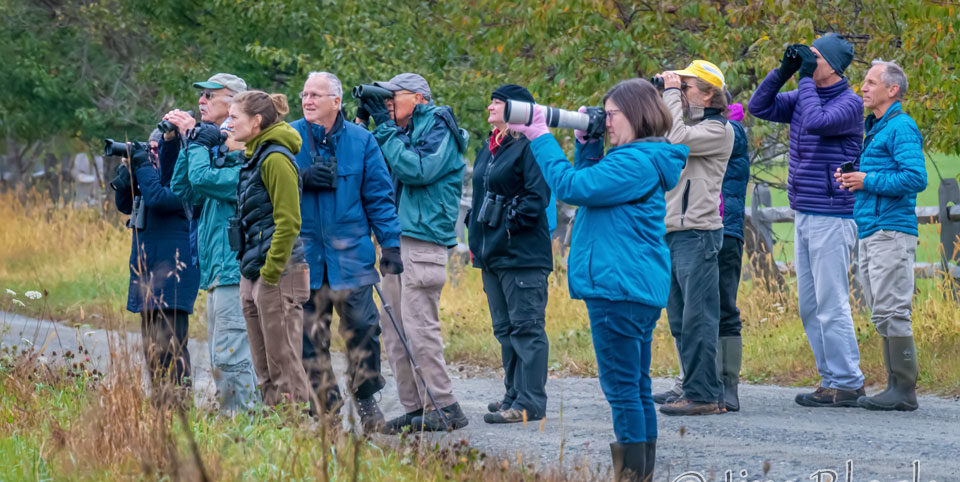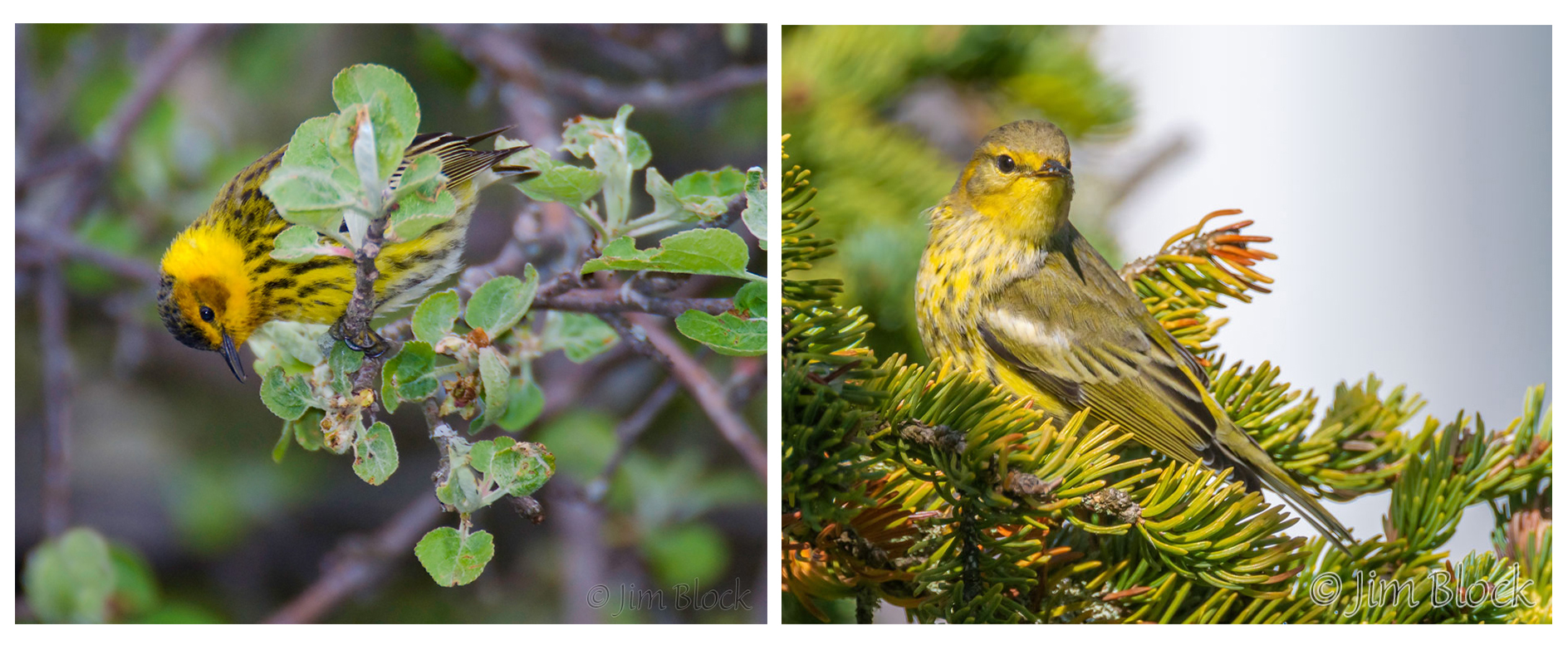

From transient winter visitors like Bohemian Waxwings, Pine Grosbeaks and Common Redpolls to splashy spring migrants like Bay-breasted and Canada warblers, Norwich hosted a steady stream of avian treasures in 2019. And, birders rose to the occasion in both tracking and celebrating them. The 2019 Norwich Bird Quest closed out the year by eclipsing its goal of 175 species found within town borders, with an impressive final tally of 177. Equally noteworthy was that 17 birders contributed 1,303 Norwich-specific Vermont eBird checklists during 2019, creating the foundation of that stellar compilation. Who knew?!
The idea behind the 2019 Quest was always more about outreach and discovery than quantifying Norwich’s birdlife. Yes, birders love a challenge, and several of us were eager to see what we might find in a single calendar year. But ultimately, our goal was to engage ourselves and others in exploring Norwich’s avian diversity, getting outdoors, having some fun, sharing the thrill of discovery, better knowing the town’s nooks and crannies, and learning in the process. We succeeded—and then some—on all fronts.
The year started, as it always does, with the Hanover-Norwich Christmas Bird Count (CBC) on New Year’s Day. This annual citizen science census, one of 23 across Vermont and nearly 2,500 worldwide, takes place within a 3-week period centered around Christmas Day. Teams of birders fan out within a prescribed 15-mile diameter circle and…count birds, from dawn to dusk, regardless of weather. The data collected through North America’s longest-running wildlife census (the first-ever was conducted in 1900) are indispensable to assess the health of bird populations, and to help guide conservation action. The 2019 Hanover-Norwich CBC jumpstarted the Norwich Quest with an infusion of 24 species, including many familiar favorites (chickadees, titmice, nuthatches, jays) and a few less common birds like Red-bellied Woodpecker, Brown Creeper, and Pine Siskin.
The yearlong tally then grew slowly, reaching 42 species by the end of February, but spring migration brought a meteoric rise: 66 species by March 31, 110 by April 31, and a remarkable 164 by May 31! Nothing lures birders outdoors like the arrival of spring migrants, from the earliest Red-winged Blackbirds and waterfowl in March to the last flycatchers and warblers in late May. Despite prolonged bouts of cold and wet weather throughout the season, 2019’s spring avian procession did not disappoint. Especially dazzling was the warbler parade in mid-May, when >20 species provided a visual and acoustic display beyond compare. Many slack-jawed birders thrilled to the sight of >15 Cape May Warblers in a small grove of blossoming cherry and crab apple trees at Kendall Station, etching memories that will endure for years.
June brought an abrupt and pronounced slow-down in both birding activity and new avian arrivals. Between June 1 and August 31, a mere 5 species were added to the master Quest list, leaving us at 169, though our goal of 175 now seemed well within reach. All 5 newcomers were noteworthy birds, including (in order of appearance) Black-billed Cuckoo, Blue-gray Gnatcatcher, Great Egret, Common Nighthawk, and Blue-winged warbler.
Fall migration is a more protracted phenomenon than its spring counterpart, typically getting underway in mid-August and continuing well into November. The season is another big draw for birders—numbers of migrants tend to swell in comparison to those of spring, as returning adults are augmented by the summer crop of youngsters. Autumn 2019 featured, on balance, a lackluster migration through Vermont, with persistent south winds and few dramatic “fallouts,” which birders live for, spring or fall. Waterfowl in particular staged a poor flight, and we missed a number of hoped-for species in Norwich, such as Snow Goose, Brant, all 3 scoters, and Long-tailed Duck. However, we added an expected array that included Northern Pintail, Pied-billed Grebe, Philadelphia Vireo, Swainson’s Thrush, and Lincoln’s Sparrow. Species #175 was a good one, as Spencer Hardy observed 3 Red Crossbills fly over his Tucker Hill Road home on October 20. The final two months of 2019 yielded another two species, one expected and one definitely not: Horned Lark on November 23 and Ring-necked Pheasant (an exotic but possibly feral species) on December 6. Our final tally stood at 177.
A few “standout” (uncommon and/or unexpected) birds documented in Norwich during 2019 included (by date of discovery): Northern Shrike (March 23), Red-breasted Merganser (April 10), Bonaparte’s Gull (April 12), Caspian Tern (April 15), Vesper Sparrow (April 18), Red-necked Grebe (April 25), Horned Grebe (May 4), Short-billed Dowitcher (May 18), Least Bittern (May 20), Black Vulture (May 22), Yellow-bellied Flycatcher (May 27), and Olive-sided Flycatcher (May 30). While nothing exhilarates hardcore birders more than rarities and surprise discoveries, the spectacle of a Cape May Warbler horde voraciously foraging on cherry blossoms may be the 2019 memory that many Norwich birders most vividly recall.

Ultimately, the 2019 Norwich Bird Quest was about people and fostering enthusiasm for the wonder of birds. We organized half a dozen or more community walks through the year, and these never failed to generate zeal, shared discoveries (many eyes make light work…), and camaraderie. With a new year on tap, we’re at it again, and the 2020 Norwich Bird Quest is now officially underway. We can’t expect to build a year list much more robust than 2019’s, but we’ve set modestly ambitious goals for ourselves: 180 species (including at least 3 that weren’t found in 2019), 1,500 eBird checklists, and 20 eBirders contributing those lists (with at least 3 of those under the age of 21). Join the fun, set your own personal goals, and get out there with your binoculars! And, don’t forget to report your findings to Vermont eBird.
Congratulations to you all for a wonderful year!
We had a trial year first-ever Jericho-Underhill CBC this year (count circles all around us but none here!). The community interest and enthusiasm was exciting and heart-warming! We saw 34 species, over 2000 individual birds, and already have about 30 birders lined up for next year. We’ve applied to Audubon to make our circle official.
I would like to participate in some of your activities. Can you add me to your email list, please?
Good morning, Susan – Thanks for the interest! I’ve never combined my e-mail class lists (for participants in birding classes and walks), birder friend lists, neighbor lists, etc. Maybe that’s something I should do this winter. However, upcoming activities are always posted at https://vtbirdsandwords.blogspot.com/ under Classes.
Hello, Maeve. Bird counts are always interesting. My aunt participated in them on the DelMarVa Penninsula years ago, and now I have friends who annually go to the Bosque del Apache south of Albuquerque. My interest is non-participarory at the moment, but I would like to congratulate your group on keeping this priceless activity thriving in this uncertain world.